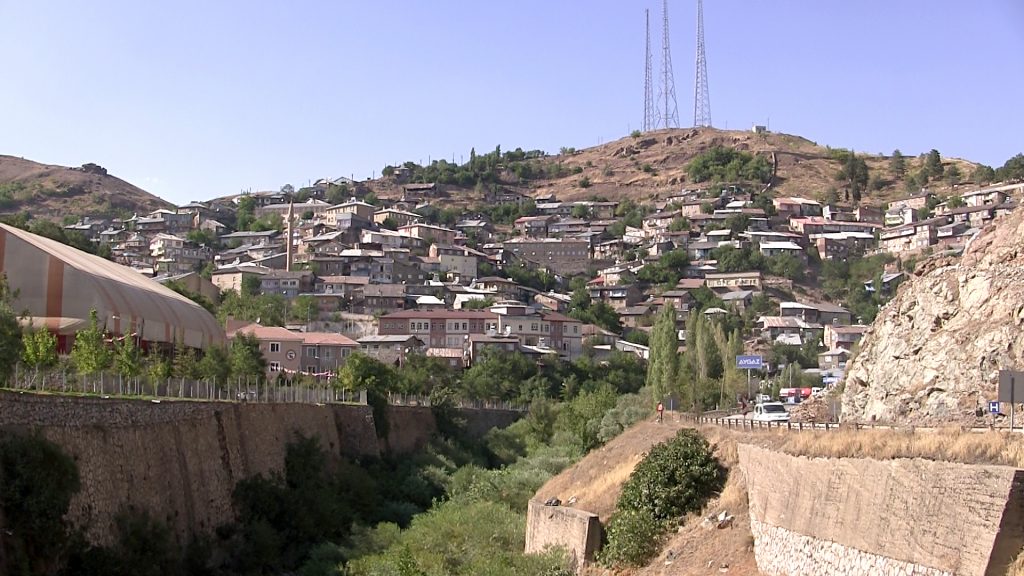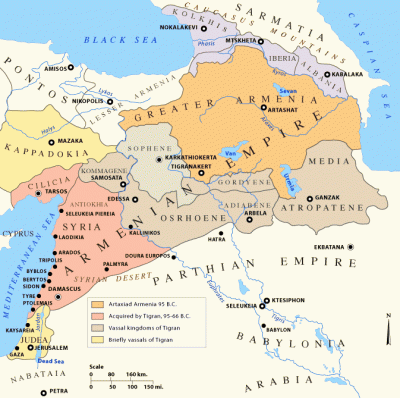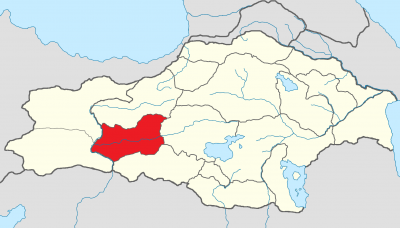
Toponym
In Armenian, Kapan Maden literally means ‘mountain pass’ (kapan – ‘passage’), whereas in Turkish ‘maden’ means ‘mine’, relating to the silver, zinc, copper, lead, coal and other mines of that region. The place is also mentioned as Kapan, or Kepan-Maden versions. It is usually identified with the ancient city of Lusatarich, which was also called Lustarich or Lusavorich (‘illuminator’). Other varieties of the toponym are Kapan madan, Kapan-maten, Kapan-meten, Keban, Keban-maden, K’epan-maden, or Kepan-maten.
An Ancient Mining Region
Kapan Maden has significant reserves of silver, copper, lead, coal, which have been exploited since ancient times. At the beginning of the 19th century only coal mines were exploited, which were also abandoned in the 1880s.
The main occupation of the population (especially the Armenian population) was silver mining and preliminary processing. Mining was again extensive here in the 1930s and 1940s, but later, in the 1960s, most of the mines were abandoned and destroyed. A significant part of the population was engaged in copper mining. The mined silver and copper were shipped to various destinations, especially Trabzon. Crafts and trade had a purely local significance.
Population
According to the census of the Armenian Patriarchate of Constantinople, there lived 789 Armenians in the kaza on the eve of the First World War. They resided in three localities (the administrative seat Keban Maden and the two villages Ashvan and Argovan), maintained three churches and two schools for 122 children.[1] At the beginning of the 19th century, there was also a small school in Ashvan, near to the church, which in 1872/3 had 18, and at the beginning of the 20th century 30 students.
In 1927, 20.4% of the population in the district spoke Kurdish as their mother tongue, while that number rose to 39% in 1968.
History
Administratively in ancient times the area was part of the Fourth Armenia of Greater Armenia (Armenia Maior) in the province of Andzit (Old Armenian: Անձիտ – Andzit, Greek: Ἀνζιτηνή – Antsitene; Syriac: Hanzit) or Gorek, which was a region of the medieval Armenia (c. 300–1000). From 384, the district of Andzit formed one of the satrapies of Roman Armenia, before becoming part of the new province of Armenia IV (also Sophene; Arm.: Tsop’k’) in 536. In the 10th century its rulers were Habel (c. 970) and Sahak (c. 995).
The history of Keban goes back very far. During the construction of the Keban dam, traces of settlements from the Copper Stone Age were found. At the time of the Hittites in the 2nd millennium B.C., Keban was part of the land of Išuwa (Ishuva). The Korucutepe and Norşuntepe settlement mounds with inscriptions and names of the kings of Išuwa bear witness to this. Remains of Assyrian trading posts are found near Tepecik. After the fall of the Hittite Empire, the Urartians ruled in the 9th century BC.
Later the Byzantines and after them the Seljuks ruled over Keban. After the Turkish conquest of Anatolia, various Turkish principalities ruled such as the Ortoqid (Ortokid, Artukid), Çubukoğulları, Dulkadir and Ak Koyunlu. In 1515, the Ottomans defeated the Safavids and became masters of all Anatolia.
Destruction
“(…) there is no record of survivors. An official report, probably dating from September 1915, tersely indicates that 308 Armenians were deported from the kaza of Keban Maden. It would seem to follow that more than 400 people were allowed to remain in the kaza, or more likely, were put to death in their native villages under the supervision of the kaymakam, Tevfik Bey, who occupied his post from 2 May to July 1915.”[2]
Keban Maden Town
The administrative seat of the Ottoman kaza of same name is located in a valley not far from the confluence of the Eastern Euphrates and on the left bank of the Western Euphrates.
“(…) at Keban the Arparian family worked the silver mines by Imperial writ.“(3)
Among the protected monuments are two Armenian churches dedicated to the Holy Mother of God; eyewitnesses described them as very impressive and ‘magnificent’. Until the beginning of the 20th century, the likewise magnificent Greek Orthodox church of Mihin, a so-called ‘gilded church’, which was also an important architectural creation, remained untouched.
The Keban Dam on the lower reaches of the Aradzsan River (Trk.: Murat), commissioned in 1974, is the second largest in Turkey.
Population
In 1872/3, Keban Maden had just 20 Armenian and two Muslim households, but at the beginning of the 20th century its population reached 2,500 people, or 300 households, almost half of whom were Armenians, and the other half were Muslims and Jews.

